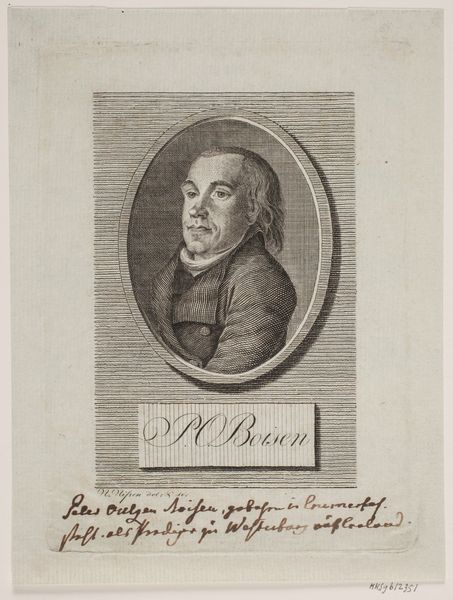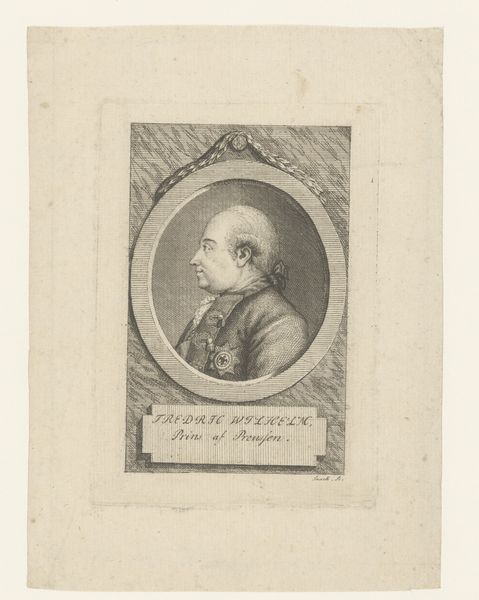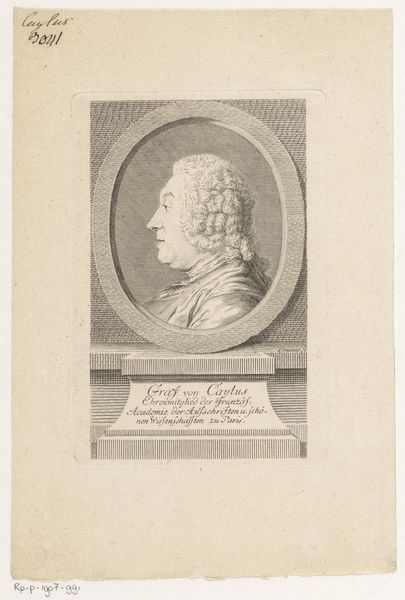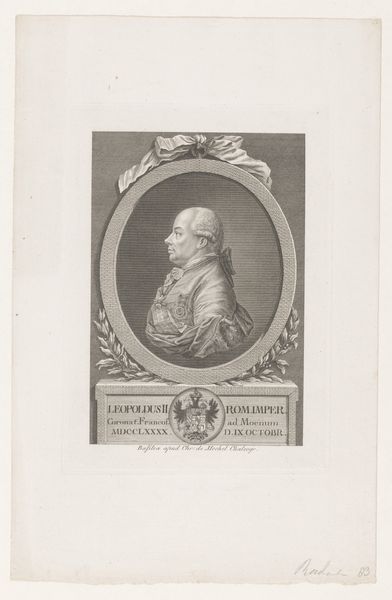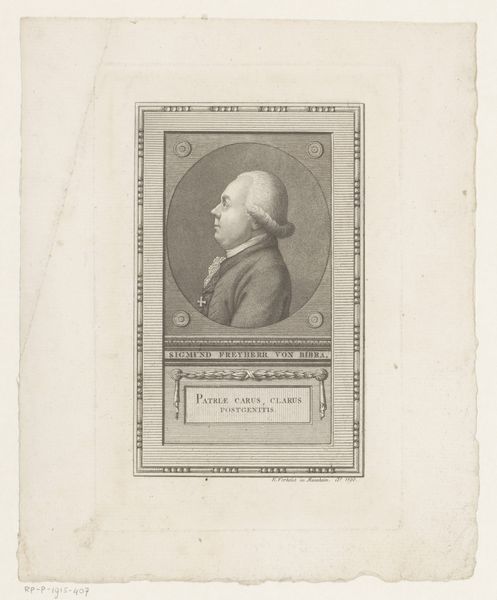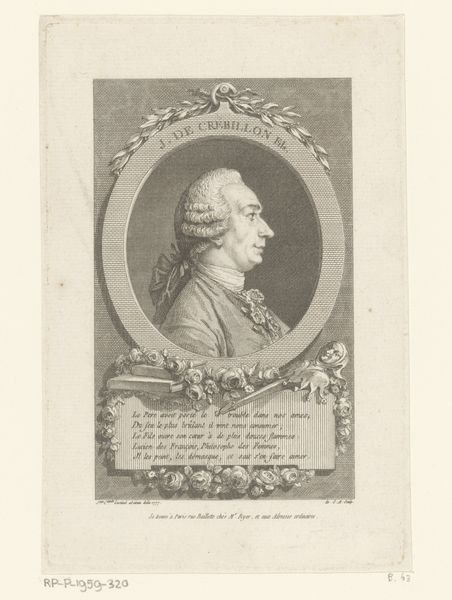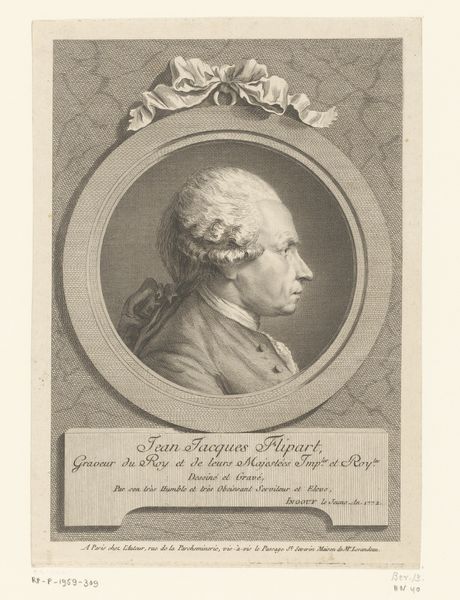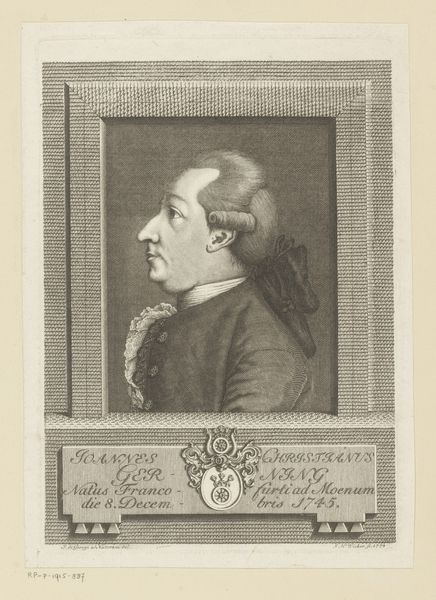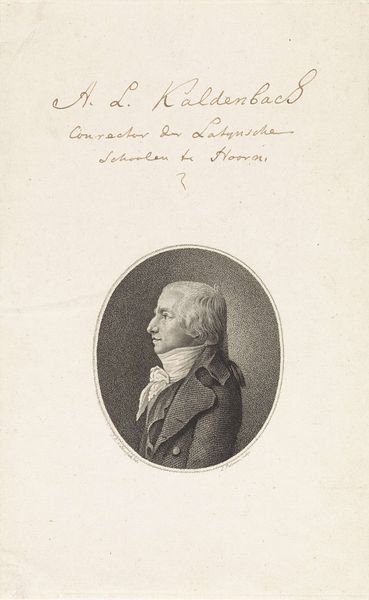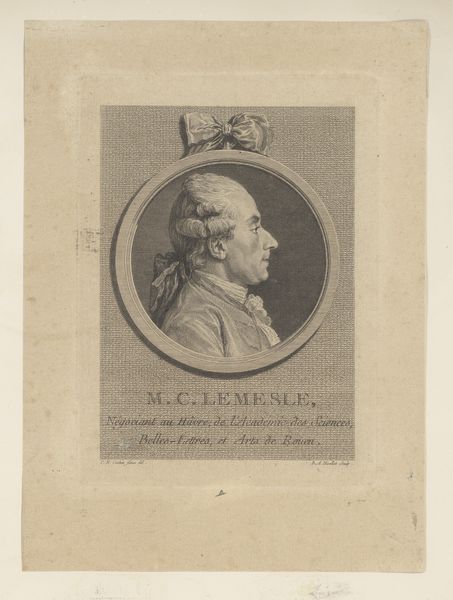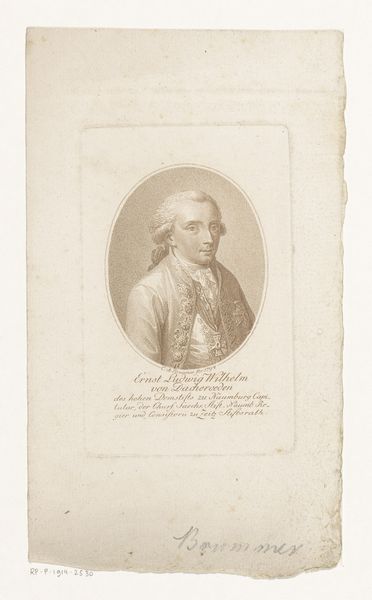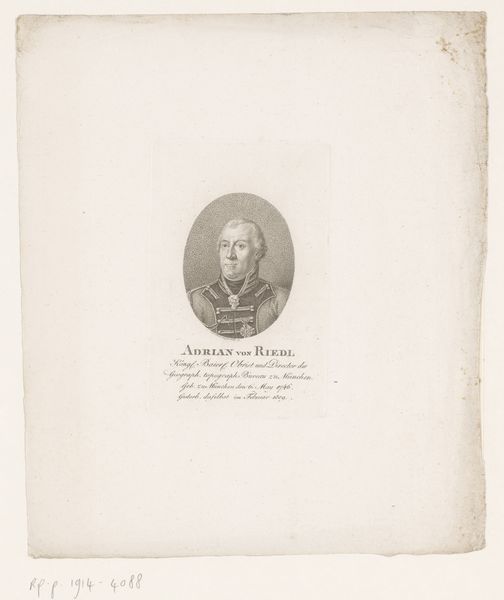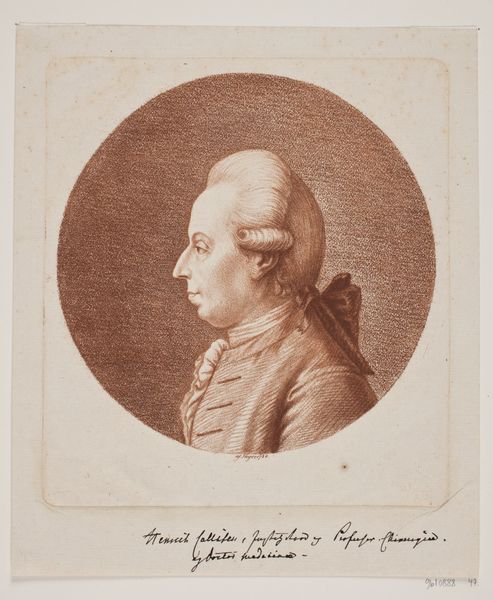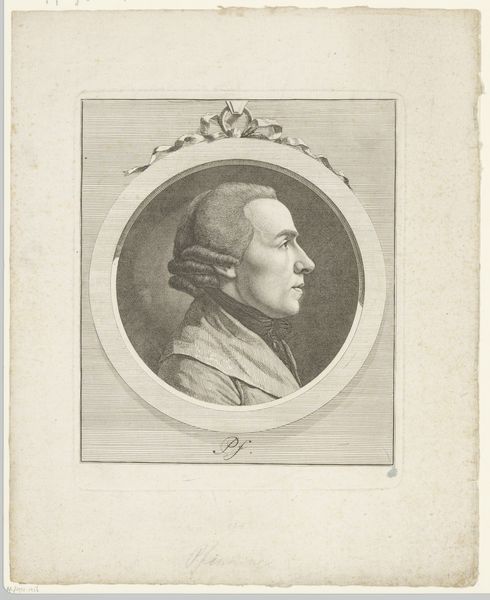
print, engraving
#
portrait
#
neoclacissism
#
aged paper
#
toned paper
#
light pencil work
# print
#
history-painting
#
engraving
Dimensions: 173 mm (height) x 109 mm (width) (plademaal)
Curator: This is an engraving of Rudolph Buchhave by G. N. Angelo, placing the work somewhere between 1767 and 1816, currently residing at the SMK in Copenhagen. Editor: The figure emerges subtly from the aged paper; there's a real sense of delicate refinement to this Neoclassical print. Curator: Indeed. Neoclassicism was hugely influential then, steering the arts away from the ornamentation of the Rococo style towards classical simplicity, which, politically, meant a return to Enlightenment values and ideals. We see those ideals embedded in the visual representation. Editor: Speaking of production, the fineness of the lines in the engraving speaks to highly skilled labor. It suggests the engraver's mastery of the tools, like the burin, and also a very controlled application of pressure to achieve such subtlety. Was the printmaking industry established, or were individual engravers producing these works? Curator: Angelo was part of a growing network of artisans producing imagery that helped to codify social status and create visual records of the era. Portraiture of notable figures like Buchhave, a physician, suggests how society valued his contributions. Printmaking allowed for wider circulation. Think about how images shaped public perceptions. Editor: The materiality is important; it is print which is itself made for dissemination and exchange. And it appears age-toned—that's fascinating, adding texture and authenticity! It makes me wonder how many impressions were made, and to what social circles this image would have been circulated. Curator: The decision to portray him in profile, within an oval frame, lends itself to classical precedents, like Roman portrait busts. His powdered wig, tailored coat—it's a careful construction of identity. The engraver also made particular choices to project notions of prestige onto this likeness. Editor: This work prompts questions about labor, visibility, and the relationship between an individual and the means of replicating their image within a community. Curator: A valuable glimpse into the machinery of image production and cultural transmission within 18th-century society, wouldn't you say? Editor: Precisely! The layering of process and person, really gets you thinking.
Comments
No comments
Be the first to comment and join the conversation on the ultimate creative platform.
